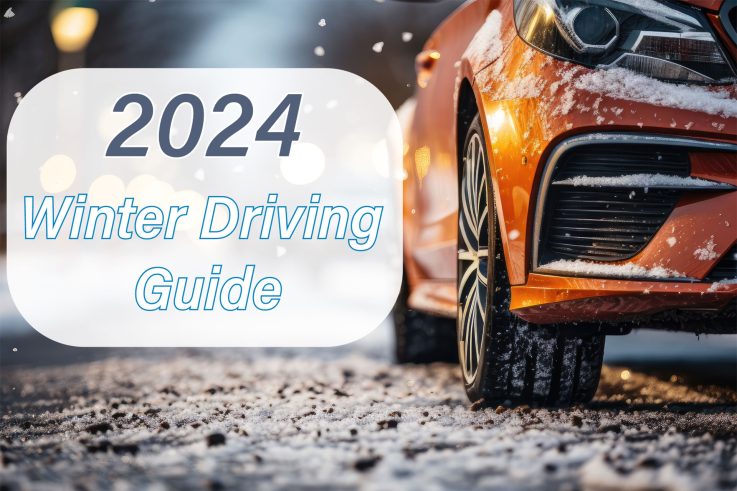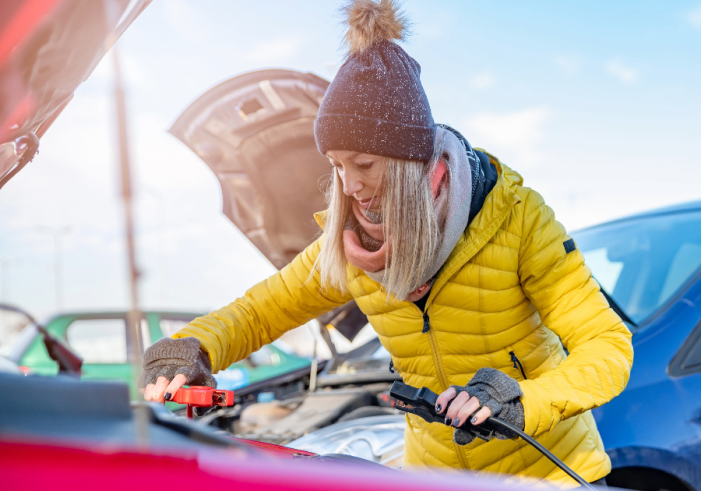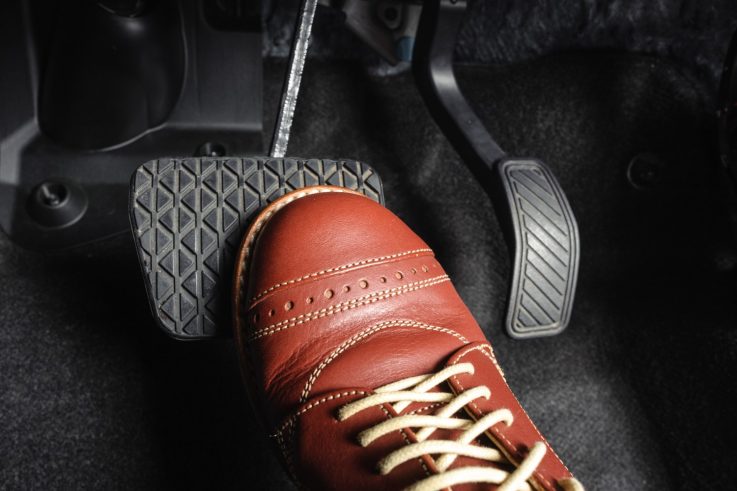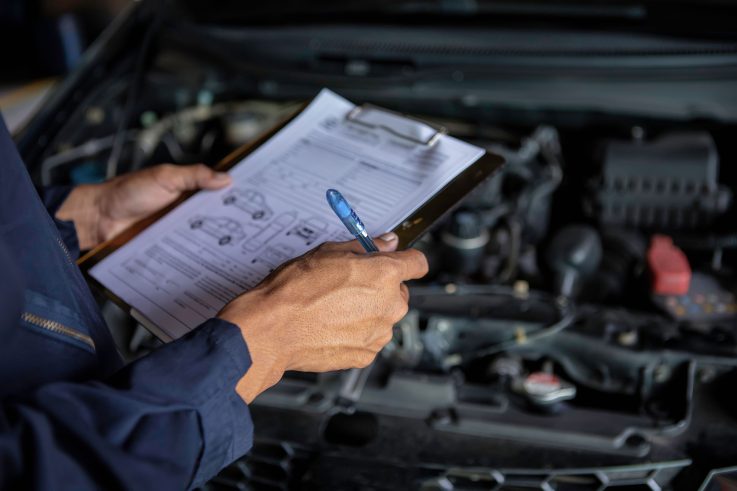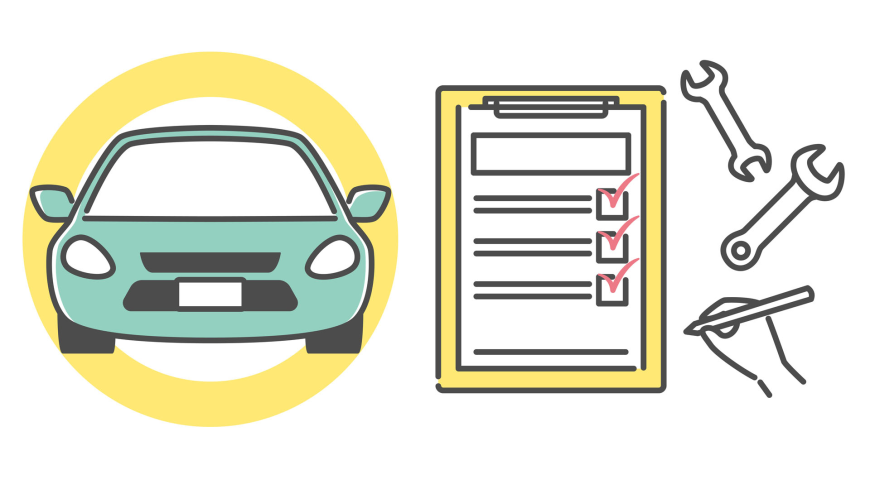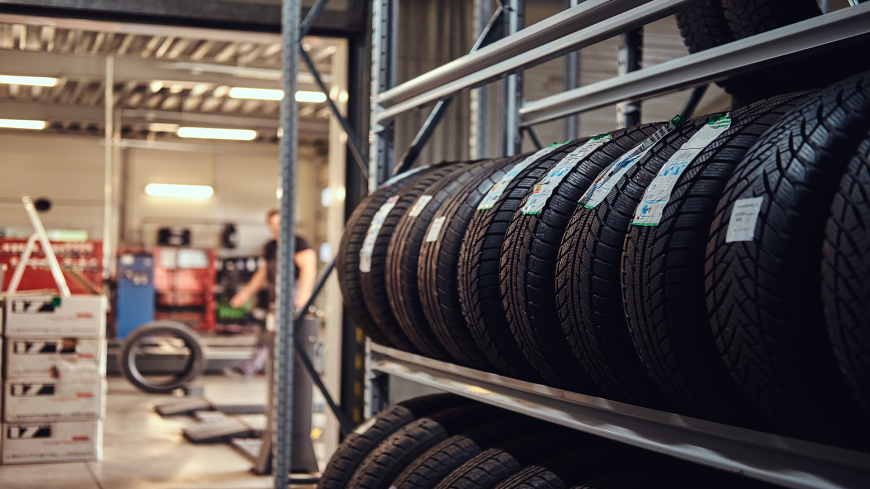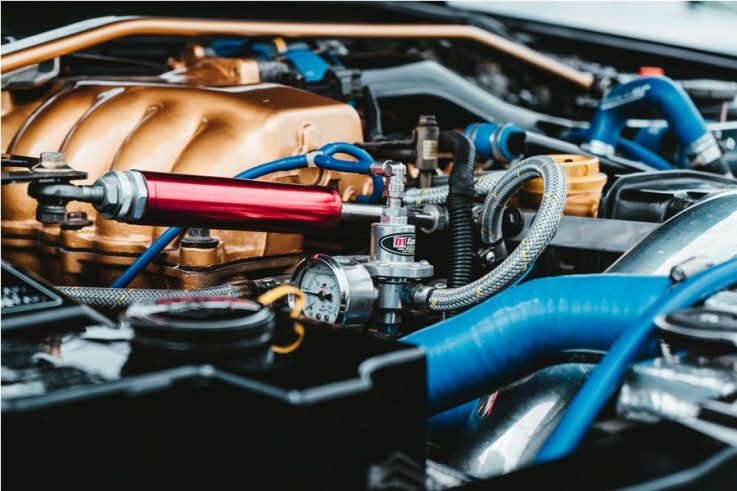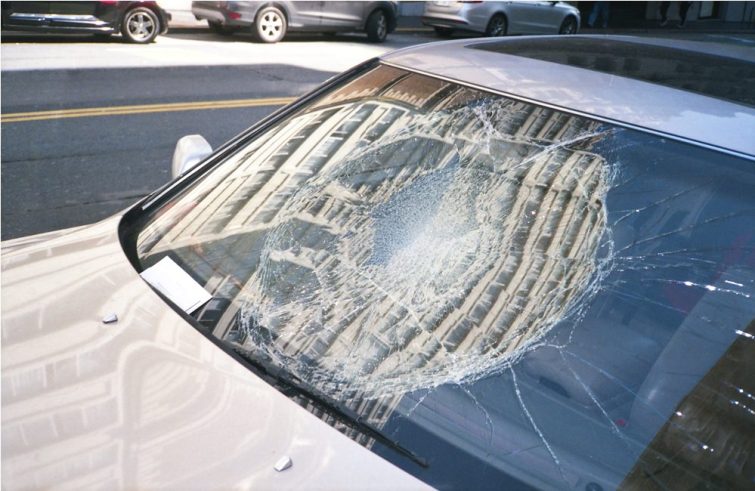- by ShowcaseCollisionInc
- 0
Michigan Winter Driving Guide for 2024
With the winter snow flying already in Michigan and elsewhere, now is a good time to review some winter safety tips. Everyone is aware of these tips, but they can easily be forgotten over the course of a long spring, summer, and fall season. So when winter rolls around again, most of us have already forgotten our good habits driving through inclement conditions, and we are sometimes surprised by the impact weather has on driving conditions. So you don’t get surprised this year, it would be a good idea for you to re-acquaint yourself with some of the most useful driving tips for the winter. The last thing you’ll want is to make a foolish mistake behind the wheel, and find that your car needs some auto body repair after having been in a collision. Winter driving conditions can be very treacherous, and it’s well worth your while to do what you can to prepare.
Have your vehicle prepared for winter
The first thing you should check when you’re preparing for winter is your tires, since these are the number one components contributing to safety. It’s also important that you have good traction as you drive through winter snow and ice. It has been determined that under such conditions you can generally stop somewhere around 50% faster on poor road conditions when your tires have good traction. After making sure you have good tires, think about items that you want to pack in your car when you’re traveling any distance. The things that can be really helpful include the following: First Aid kit, sand for gripping the snow, a snow brush or an ice scraper, an emergency kit, jackets or blankets, and emergency food and water.
If you ever happen to be stuck somewhere on the road in bad weather conditions, you’ll appreciate having these items and even more on hand in your vehicle. Every time you start out driving somewhere in the winter time you should make sure that any snow or ice have been removed from the hood and grill of your car, from your door windows and mirrors, and from the rear window and tail lights. It’s very important that these components be cleared of snow and ice, so that you can drive safely where you need to. When driving through wintry conditions, turn your low beam headlights on so that you are easily seen by other drivers on the road.
Given that winter driving requires more from your vehicle, and the hazards of getting stuck in bad weather are so extreme, you should take the time to make sure that all aspects of your vehicle are prepared for the task. Some components to check on your car include the battery and the ignition system, since these can definitely be affected by cold weather and can cause failures. You’ll also want to know that the heater is in good working order, if you should happen to be stuck in snow somewhere.
It goes without saying that your brakes need to be operating at peak efficiency, because road conditions are almost always significantly worse in winter time than they would be at any other time of year. Make sure all your headlights, tail lights, and all other lights are operational and allow your vehicle to be clearly seen by others on the road. You’ll also want to know that your windshield wipers are operating efficiently, especially when there’s heavy snow or rain, to keep all that nasty stuff off your windshield, so you can see and drive properly. Lastly, make sure to check the fluid levels on your vehicle, so you don’t unexpected run out of wiper fluid, transmission fluid, or any other fluid that helps your vehicle to operate more efficiently.
Winter driving
Winter driving is a little different from good weather driving, and generally will allow for less traction than you would find on bare, dry roads. That means every time you get behind the wheel in winter time, you’re more likely to be involved in some kind of an accident or have some kind of driving mishap on the road. To minimize the chances of you getting involved in some kind of problem, you should adapt your driving in winter time to the conditions prevalent. Be especially careful when you are aware that you’re running behind schedule – don’t try to make up that lost time by driving faster on your trip. This kind of attitude is responsible for far more accidents than you might think, and it’s a dangerous mentality to have.
It will help tremendously if you leave extra space between yourself and other motorists on the road, drive slower and brake sooner, make slower turns, accelerations, and stops, and if you give yourself more time to reach your destination. Even cars with four-wheel drive have difficulty stopping on ice in winter, so you can count on your car being subject to the same constraints. If you should ever find yourself in the midst of a prolonged skid, make sure not to panic. The best way to react is to remove your foot from the accelerator, and turn into the skid without slamming on your brakes.
You should also be mindful of the glare of the sun, because it’s generally angled lower in the sky during the winter months. This can obstruct your vision and make driving somewhat dangerous, especially if you happen to be driving in the direction of the sun itself. If you do have any trouble seeing traffic on the road, slow down and leave lots of space between yourself and other vehicles. It’s a good idea to have a pair of sunglasses in the car to combat the glare. Keep in mind that when the weather gets really nasty, your best bet would be to just stay home and delay the driving trip you had in mind. If you’re forced to go out into bad driving conditions, just make sure that you are totally alert and that your car is prepared for those conditions.
- by ShowcaseCollisionInc
- 0
What Makes Car Batteries Die in Cold Weather and Avoiding it in Michigan
A Michigan winter can get pretty cold at times, especially when northerly winds descend upon the state and usher in ultra-cold air. This can cause your car battery to die, and then you’ll need to take it in for auto repair or car maintenance in order to get back on the road again. In this article, we’ll discuss why it is that your battery is so vulnerable to damage from extreme cold, and just what you can do to prevent that from happening. Nothing is worse than heading out for work in the morning and discovering that your car is dead, so remember this information and avoid that kind of mishap this winter.
What makes car batteries die in winter
Normally, a car battery operates by converting chemical energy into electrical energy, and this is what powers most of the systems in your vehicle. When the weather gets cold, this whole operation gets slowed down significantly, and when the temperature dips below freezing, you can count on your battery losing roughly one-third of its starting power. That means it will automatically be more difficult to start your car when the temperature is less than 32 degrees Fahrenheit. At the same time, the oil in your engine will become thicker, and this too impedes the successful startup and operation of your car. Since the oil is thicker, it will require even more battery power to get your vehicle going, and this quickly drains away the power stored in the battery.
How to prevent dead batteries in Michigan
There are several tips you can use to prevent your battery from dying unexpectedly after some frigid night in Michigan. First of all, you should have your battery strength tested at the onset of winter, so you know how strong it is before the really cold weather arrives. If your professional mechanic recommends that you switch to a new battery, you should follow his/her advice and put a fresh unit in your vehicle. If you can park your vehicle inside a heated area like a garage, that will allow you to avoid having the worst of the cold weather impact your vehicle.
You should get in the habit when leaving your vehicle for the day to turn off all the electrical accessories, so you’re sure something isn’t draining your battery without your knowledge. All those accessories can represent a serious drain on the life of your battery, so it’s important to ensure that they’re all turned off after using them. Make sure that your car doesn’t sit for long periods of time during cold weather, meaning that it should not be sitting in the driveway for a week at a time.
When you don’t drive your vehicle, it begins to lose power even if nothing is being used. By driving your car regularly, you can keep your battery charged up and you can avoid the possibility of a failure. One last thing you can do is purchase a battery heater, and these are available at all auto parts stores and some department stores as well. By keeping your battery heated during cold weather, you can go a long way toward keeping it operational all winter long.
Need battery help?
If winter does somehow sneak up on you before you’ve had the chance to take precautions, you can call the Showcase Auto Care Center in Michigan at (586) 979-6450. Our team will have you back on the road before you know it, and you’ll be good to go for this season and several more to come.
- by ShowcaseCollisionInc
- 0
Fall 2023 Driving Tips
With the arrival of autumn, driving conditions will change for much of the country, so it’s time to be aware of those differences and modify your driving behavior to accommodate them. Below we’ve provided some driving tips for Fall Driving 2023, so that you can continue your safe driving during the changing season. The first recommendation will be to have your vehicle serviced for fall driving, and that should include a check of your tires, brakes, fluid levels, and essential systems like lights and heating. If any kind of auto repair is necessary, this should be done as soon as it can be arranged. Other more specific tips are described below.
Watch out for wildlife
Wildlife tends to be more active during the hours around dawn and dusk since many wild animals have become nocturnal. Deer can be particularly dangerous to motorists since they have a habit of leaping in front of running vehicles at unexpected moments. Other smaller animals might also be crossing the road at these times of day, so watch out for critters like opossums, rabbits, raccoons, skunks, and even stray dogs and cats. If you should collide with any kind of larger animal, it could result in serious damage to your car, and possibly to yourself as well.
Be extra careful on overpasses and bridges
As the weather cools, especially at night, it becomes possible for bridges and overpasses to freeze up. This creates hazardous driving conditions, because most drivers won’t be aware they’re about to hit a frozen patch, and will maintain speed. A high-speed slip can create the potential for loss of control over your vehicle, and when that happens, serious accidents can occur. Bridges and overpasses have a tendency to freeze up before other areas, so it generally comes as a surprise when you hit a skid on one of these areas.
Watch out for foggy conditions
Fog can create all kinds of hazardous conditions, so it becomes necessary to proceed with caution in foggy areas. It’s super important that you see other drivers and that they are able to see you. So make sure your lights are in good working order and that they’re on when you encounter any foggy conditions. It’s best to avoid using your high-beam headlights, because they create a glare in fog and don’t allow for best vision in those conditions. It’s always a good idea to drive a little slower in a fog patch, so you have more time to react to a suddenly developing traffic situation.
Be prepared to drive through leaves
There will be times when you encounter piles of leaves or even sheets of leaves on the roadway during autumn. These can reduce your level of traction and introduce a slippery element to driving. You’ll be much safer if you slow down when driving through a patch of leaves, so any slips won’t be so costly. If there happens to be a frost or any kind of icy condition present, that will exacerbate the danger presented by leaves. That means you’ll need to be extra cautious when driving over leaves on chilly days.
Prepare for different patterns of daylight
Fall days are substantially shorter than summertime days, by several hours. That means it will get dark sooner in the evening and it will stay dark longer in the morning. This can make it more dangerous to drive through your own neighborhood since it will be harder to see children playing or pets running into the street. It’s also true that the sun doesn’t climb as high in the sky as it does during summer. This means it’s more likely that the sun will be in your eyes at some point while you’re driving. Have some sunglasses ready for times when there’s a huge glare of sunshine, so your driving vision isn’t impaired.
Contact Us
Sometimes, even with the best approach to driving and in relatively safe and dry conditions, accidents can still happen. If you’ve been involved in any kind of traffic mishap, contact us at (586)-979-6450 where our Showcase Collision experts will be waiting to restore your vehicle to prime condition. We also handle all kinds of auto repairs, and you can always count on reliable, professional service from our team of experienced mechanics and collision specialists.
- by ShowcaseCollisionInc
- 0
Common Brake Problems and Solutions for Your Car
It shouldn’t be surprising that your vehicle’s brakes wear out so often, given the fact that they are one of the most used systems in your entire vehicle. The braking system is also one of the most important systems on your vehicle because its functionality can either be life-saving or life-threatening in actual usage. Almost everyone has been obliged at one time or another to suddenly slam on the brakes to prevent a collision with some object, either wildlife, property, or even a pedestrian. Those are the times when you need your brakes to be functioning perfectly.
Anything less than that could result in serious or fatal injuries to the vehicle occupants, and to anyone else who might be involved. Therefore, it will be to your advantage to be aware of some of the most common problems occurring with your brakes. Even if you don’t intend to investigate or fix the problem yourself, it helps to identify the problem in the first place, so you can get the appropriate professional help. In this article, we’ll discuss some of the most common brake problems, so that you’ll know whether you need brake replacement, new brakes, or just some specialized brake service.
Brakes hanging up (not disengaging)
Sometimes breaks fail to completely disengage when your foot is removed from the brake pedal. When this happens, you may notice a smell like something is burning, which comes from all the heat that is generated by the brakes when they fail to disengage. Of course, it is completely unsafe to drive while the brakes are dragging or hung up like this, and it will definitely cause more damage to the brakes if you drive with them while engaged, because they’ll wear out much much faster. When brakes become hung up like this and do not disengage, it’s usually because the rotor or drum is rusted, the master cylinder return hole is clogged, the brake line has become pinched, the parking brake cable has seized up, or the calipers or pads have seized up.
Of these, the most likely cause is having the calipers or pads seize up. This can occur regardless of the age of your vehicle or its brakes and is often triggered by salt used on winter roads, that accumulates on the brake pads. Any parking brakes which are cable-operated might jam up in the same way, and will generally require the parking brake cable to be replaced. For the most part, this can be prevented by avoiding driving through deep puddles, as well as areas that are heavily salted during the wintertime. Of course, this may not always be possible, so after you have driven through such an area, it would be wise to clean the underside of the car as well as the wheels. This will prevent the possibility of a rust buildup, which will definitely degrade the brake system.
Shudder after repeated braking
This usually occurs when the rotors on your brakes are either bent or warped, which happens sometimes from a buildup of localized material on the surface of the rotors. This can be overcome by resurfacing the rotors and grinding them flat and smooth. However, this option is only available if the problem has not deteriorated to a severe point where resurfacing will not solve the problem. If rotors have become warped or bent because of overheating, this cannot be fixed by grinding the surface flat again, since the rotors will simply become warped again as soon as they are exposed to heat.
Hard pedal/Soft pedal
Sometimes you’ll notice poor performance from your brakes, where you might feel the brake pedal is either too easy or too difficult to depress normally. In the case of a soft pedal, the culprit could be any one of the following:
- failed wheel bearing
- overheated brake fluid
- failed master cylinder
- damaged wheel cylinders or calipers
- blown brake line
- low level of brake fluid
- air included in the brake fluid
- bad residual valve
- fluid leak in the system.
Of these, one of the most common issues comes in the area of the fluid level in the master cylinder reservoir. Any leak here might cause the fluid level to be so low that the failsafe braking system is also ineffective. When you notice a low fluid level, it will likely be because the pads are experiencing excessive friction, or the drums could be completely worn out. Sometimes brake hydraulics will get air in the lines after service has been performed, and it’s also possible for a bad master cylinder to inject air into the line. A bad wheel bearing can cause the brake pads to be pushed back into the caliper too far.
When you notice that it takes a great deal more pressure to bring your car to a stop than it normally would, this is a hard pedal indication on your brake system. Most of the time when you experience a hard pedal situation it will be due to a failure in the power boost system. Since the power booster uses an engine vacuum to help apply the brakes, it is a standard feature in most modern cars. If this booster or a vacuum hose becomes bad, it can cause a leak that will be expressed as rough engine idling or poor brake boost. Here are the likeliest causes of a hard pedal indication:
- bad check valve
- worn-out brake pads
- seized up calipers
- failed power booster
- leak in the vacuum hose
- complete collapse of the vacuum hose.
Squealing noise when braking
The annoying high-pitched sound which comes from your brakes sometimes is intended to alert you that you only have about 25% of your brake pad left intact. Of course, your brakes will also squeal more loudly when you run through a wet or glazed patch on the road, or you’re in stop-and-go traffic. In this case, depressing the brakes emphatically will generally clean off the surfaces and return your brakes to normal. There are also some factors that can trigger excessive noise because brake pads sometimes resonate in the same range they vibrate at during usage. This is because of different manufacturer tolerances, unexpected wear factors, different levels of friction with materials, and several other causes. You can generally overcome this by applying an anti-squeal paste, which raises the resonance outside the vibration range.
Sinking pedal
You may notice this situation when stopped at a traffic light, and you observe that the pedal is slowly sinking to the floor when your foot rests on it. This is often because a master cylinder is beginning to fail, or because somewhere in the system you have a leak. If you find that there are no leaks after investigation, the most likely cause of the sinking pedal issue is that one of the rubber seals on the master cylinder is leaking and allowing fluid to creep in. For this situation, and all others that are abnormal, you should have your brake system checked out by a professional. When your life and the lives of your passengers depend on great brake performance, you simply must have your brakes in good working order.
- by ShowcaseCollisionInc
- 0
Safe Driving Tips For Summer 2023
It’s a good idea to keep in mind some drivers safety tips whenever summer rolls around. Why? Statistics show that there are far more accidents on the highways of our country during summertime than during any other season of the year. This should be surprising, since driving conditions should be safer during summer than at other times. The truth is though, that Michigan summer driving can be the most dangerous time of the year to take a road trip, even if it’s not a cross-country or long-distance case.
The reason for the high incidence of accidents during summer is the fact that there are a great many more inexperienced drivers on the road during the summer season than at other times of the year. Your chances of encountering a novice driver are greater in the summertime than during spring, fall, or winter. Not even the icy, snowy roads of winter can make the season as potentially dangerous as summer for getting caught up in an accident. For that reason, we’ve listed some of the best safe driving tips, to keep you safe on the road and accident-free while doing Michigan driving during the busiest traffic times of the year.
Stay free of distractions
Distractions are one of the biggest causes of accidents on the country’s roadways, and these distractions can come in many different forms. For a mother driving young children, there can be distractions with youngsters’ behavior. Music might be playing too loudly, and can interfere with the driver’s concentration. You might be tempted to answer a phone call, or to text a response to a friend or relative. All these actions take focus away from the road where it belongs, and can easily lead to some kind of road mishap. Just because you’ve eaten fast food on driving trips before doesn’t mean it will be safe to do so this time – anytime your focus is on something other than traffic and the road, it’s possible for an accident to occur. Keep all distractions away from the driver, so you can enjoy a safe trip to whatever destination you have in mind.
Leave early
Many drivers have the attitude that they can make up some lost time on the road, after getting a late start on driving. This can be a very dangerous mindset to have, because it prompts you to take some chances while driving that you would recognize as dangerous any other time. It’s never a good idea to try and gain five or ten minutes by driving faster or taking shortcuts – more often than not, this results in a lapse in judgment while driving, and that’s when mishaps occur. By leaving a few minutes early, you’ll be able to relieve the need for speeding up or making up for lost time on the road. It will be safer for you and all your passengers, if you simply adopt your normal, safe approach behind the wheel.
Make sure to buckle up
The statistics regarding serious injuries and not wearing seat belts are alarming, to say the least. According to the National Highway Traffic Safety Administration, more than half of all fatal injuries each year are caused by the driver not wearing a seat belt. It only takes seconds to do, and it just might be the difference between staying safe inside the vehicle, and being thrown through a windshield, or suffering some other catastrophic injury. Make sure that you buckle up before starting off, and check to be sure that all passengers are likewise buckled up for extra safety. Your best chance of surviving an accident unscathed will always revolve around having a seat belt securely buckled in place around you.
Prepare adequately for long driving trips
If you’re planning a camping trip, or some other kind of cross-country road trip, it will require that you pack lots of extra things like luggage, snacks, water, recreational equipment, and maybe some kind of entertainment for the kids. All this needs to be stored in a manner that will not interfere with the driver’s line of sight with mirrors and windows. If the driver can’t see traffic situations clearly so they can be reacted to, it could cause a serious problem at some point while driving. When you know you have a long trip coming up, make adequate preparations so that you have everything you need, and so it doesn’t distract the driver.
Be ready for emergencies
Anytime you’re out on the road, it doesn’t mean ordinary life situations get suspended. You could have any one of a hundred different emergencies while driving, and the better prepared you are for them, the likelier it is that you’ll handle the crisis successfully. Be ready for a blowout with a spare tire and tire-changing equipment, have a First Aid kit on hand for medical emergencies, and make sure you have snacks and beverages available for youngsters. By preparing for potential emergencies, you should be able to handle them much more readily when they occur, and there will be far less disruption to your scheduled trip.
- by ShowcaseCollisionInc
- 0
Getting a Free Car Repair Estimate
No one ever really anticipates being in an automobile accident, but it can help immensely if you know how to react after you’ve been involved in one. There are certain steps that have to be followed at the time of the accident, so it can be properly reported and managed by support personnel. Injuries to passengers will complicate the issue significantly, since all kinds of medical and hospital care may be necessary, and it may even have a significant impact on people’s lives. After dealing with any injuries to passengers, the next thing you’ll need to consider is how to get your vehicle repaired so you can get back on the road as soon as possible.
The first thing you’ll need to do is contact your insurance company, so that the steps can be taken to provide coverage for the expenses that will certainly arise. After contacting your insurance company, the next thing you’ll need to do is to get free car repair estimates from one or more reliable collision shops that you know of, or have worked with in the past. This article will discuss how you should go about getting car repair estimates that you can live with, so that you can initiate the process of having any necessary work performed on your vehicle.
How the repair estimate process works
After you have narrowed down your list of candidates to just a few, you need to start contacting them to set up review appointments. It should take less than half an hour for any repair professional to provide you with an estimate, even after a thorough examination. When an estimator reviews your vehicle, he/she will attempt to determine the extent of the damage both external and internal, and they will probably be taking some notes during the process. After they have completely inspecting the vehicle, they’ll be able to provide you with an estimate in writing. In most cases, the written estimate will include all of the following features:
- a detailed listing of all associated costs, including the cost of labor, all replacement parts needed, and potentially some additional fees
- a clear description of all the work that needs to be done in order to restore your vehicle to the same condition it was in before the accident
- a summary of the total amount of repair costs, usually with some kind of declaration about the cost not being exceeded by a specific amount unless you provide your explicit approval
Once you have these written estimates in hand, you’ll know what to expect in terms of the extent of repairs and the length of time necessary to restore your vehicle. Even if no written estimate is required by law in your state, it will be to your advantage to obtain one anyway. Most reputable collision shops will have no problem providing you with a written estimate, since they wish to be recognized as reputable companies and this is one way of doing so. Make sure to review all the items on the written estimate with your repair professional, and don’t forget to ask any questions you have about the process before it begins.
Showcase Collision for auto repairs
If you work with Showcase Collision, we can provide you with a free repair quote, and you can count on the work being done by experienced car repair professionals. We have restored hundreds of vehicles to their pre-accident condition and we always make every effort to return your vehicle to you as quickly as possible. We understand the inconvenience it represents to clients when they are deprived of their vehicles for any length of time, so we work as quickly and efficiently as possible. When you work with us, you can be sure the job will be done right, and in the least amount of time. Contact us today to arrange for an assessment of your vehicle, so we can get the ball rolling, and have your car restored ASAP.
- by ShowcaseCollisionInc
- 0
The Essential Car Maintenance Checklist
Having a reliable car is essential for business owners and small business owners. Whether you are commuting to the office or transporting goods and services, having a well-maintained vehicle is a must. But what car maintenance should be done? Here’s a checklist of the essential car maintenance tasks that you should do regularly.
Checking Your Exhaust System
Your exhaust system plays an important role in your car’s performance. It carries away the gases produced during combustion, which helps reduce emissions, while also keeping your engine running smoothly and efficiently. That’s why it’s important to have your exhaust system checked at least once a year (or every 10,000 miles), so make sure to add this to your list of car maintenance tasks.
Tire Rotation
Tires are often overlooked when it comes to car maintenance, but they are essential for safe driving. Regularly rotating your tires can help reduce wear and tear on the treads and extend their lifespan significantly. As a rule of thumb, you should get your tires rotated every 5,000-7,500 miles or 6 months (whichever comes first). If you notice any uneven wear or bulging on the side of the tire, then it’s time for a rotation!
Oil Change & Filter Replacement
Changing your oil is one of the most important aspects of car maintenance as it helps keep your engine lubricated and running smoothly. You should aim to change your oil every 3,000-5,000 miles or 6 months (whichever comes first). Additionally, don’t forget to replace the oil filter as well since this will help keep dirt particles out of your engine and protect its parts from damage.
Keep your Car Healthy
Keeping up with regular car maintenance may seem like an unnecessary task but it is important if you want to keep your vehicle in good condition. Regularly checking and replacing vital components such as brakes, filters, fluids, tires and more can help extend the life of your vehicle and save you money in the long run. Take some time today to review our checklist above and make sure that all necessary tasks are completed on schedule!
- by ShowcaseCollisionInc
- 0
The 5 Symptoms of Worn Tires
If you’ve ever wondered how to tell if you need new tires, you’ve come to the right place. In this article, we’ll describe the five major signs that will tell you it’s time to consider replacing your current tires. Once you’ve identified the 5 symptoms of worn-tires, they should not be ignored, because your safety and the safety of your family will be at stake each time you take to the roadways. When tires get worn out, they don’t perform as well, providing less traction under rainy or snowy conditions. In most cases, this won’t matter a great deal, but there’s always that one time when excellent traction might be enough to prevent you from being involved in an accident. Check for these signs of wear and tear, and replace your tires if they do appear to be in their last phase of usefulness.
How to tell if you need new tires
You may already have noticed a drop-off in your tires’ performance before you get around to checking them. In any case, these are some of the most critical signs that you should invest in a new set of wheels:
Temperature changes – anytime the weather outside takes an extreme drop, you can count on your tire pressure dropping right along with it. If you should head out on a road trip with under-inflated tires, it will cause more heat to be generated, and that will always wear out your tires more quickly. Be aware of temperature changes and how they impact your tires.
Vibration – anytime you feel some kind of vibration or thumping while driving, it could be one of several things. If the road itself isn’t bumpy, and you feel vibration under the seats, it’s possible that your rear tires may be unbalanced. If you feel the vibration in the steering wheel, that could be an indicator that your suspension has a problem. Anytime you feel something other than a smooth ride, it should be an alert that causes you to investigate further.
Bulges or cracks – as a tire begins to deflate, it will always cause a noticeable bulge at the sides. This is an obvious indicator of low tire pressure, possibly due to a slow air leak. It’s a good idea to eyeball your tires for cracks, splits, or gouges that shouldn’t be there. When you do spot anything like this, it’s best to have it checked out, rather than to simply accept the consequences on the road.
Tire pressure – each month, your tires will probably lose about one lb. per square inch of tire pressure, and if you should go several months consecutively without checking them, you could eventually find that your tires are significantly under-inflated. It’s always safest to have the correct tire pressure, so that you are sure your vehicle is performing correctly, and that you get the smoothest possible ride.
Tread Wear – this is one of the best and surest indicators for determining whether or not you need new tires. Most modern tires have small bits of rubber that are woven into the tread at a specific depth. All you have to do is locate these wear bars that cross the groove of the treads, and examine them for wear. If you see that the tread pattern has been worn down right to the wear bar, that’s an excellent indicator that it’s time for a tire replacement.
When you do replace tires?
When shopping for replacement tires, it’s best to have all four tires replaced at the same time. This is because all four will then have the same mileage, and you won’t have to remember which tires were replaced at which mileage levels. If the cost is a problem, you should at least make sure to replace the problem tire and its partner on the other side. As a bare minimum, front and back tires should always be replaced at the same time, so you get equal braking and driving characteristics between your front tires and those in the back. Looking for information on other auto repair and services? Check out our informative blog on whether you should be charged for an auto repair estimate.
- by ShowcaseCollisionInc
- 0
Is It Worth It To Invest In A Car Engine Repair?
One of the most serious types of repairs that could befall your vehicle is a blown engine. That immediately forces you to consider whether it is more cost-effective to repair that engine or to simply invest in a new vehicle. To have the best information possible, you should probably have a skilled mechanic check out your vehicle, and pick their brain about whether or not a car engine repair might be the best option. When engines become damaged, there are basically three possible outcomes – you either have to replace a few parts, do some serious maintenance, or reconcile yourself to the fact that the engine has become totaled.
Maintenance Service
The aim of maintenance service is really to be proactive and take care of the engine, so as to prevent the kind of catastrophe where the engine dies mid-road. Whenever you observe any kind of issue with your engine, for instance, a check-engine light on the dashboard, you should attend to it promptly, so as to avoid any more expensive issues. If you can get the work done before any serious damage occurs, that will be the best you can hope for.
Of course, any maintenance procedure will always depend on how serious the problem already is, so it’s best if you address all issues in the earliest stage. By doing this, you’ll have a much better chance of avoiding serious engine troubles.
Car Engine Repair
Once you know that damage has occurred to your engine, it’s time to start exploring possible options for repair work. If the problem is on a single part or just a few related parts, you may be able to repair the engine without having it cost a fortune. You could even get very lucky and have the problem confined to a relatively inexpensive fix like a hose or replacement belt.
Larger issues, for instance, the transmission or radiator, will certainly cost you a lot more, and the repair total will run up quickly. Still, this will be much less expensive than purchasing a brand-new vehicle or footing the bill for a complete engine replacement.
Blown Engine
There’s no question that the modern engine in most vehicles is a very complex collection of parts, designed to perform a specific service, often under stressful conditions. Once an engine has become badly damaged, it’s very possible that the same kind of damage will be spread to other parts of the vehicle. In this scenario, repairing the engine is not usually an option. Instead, you’ll have to start considering a total engine replacement, or a total vehicle replacement.
What about Engine Replacements?
Replacing your engine will generally be a much cheaper option when everything else fails. So, if you’re wondering whether it’s beneficial in your own case, here are some things to consider. If your warranty still covers your vehicle, then you should definitely replace the engine, because the cost to you will be minimal.
If you have good insurance coverage, this can work almost the same as if you were still under warranty, with the policy covering most of the heavy-duty costs. Even without insurance or warranty coverage, it will generally be much less expensive to replace an engine than it would be to buy a completely new vehicle. If you’re weighing your options between installing a new engine and buying an older used vehicle, you should consider the fact that used vehicles often come with their own engine problems after years of usage and sometimes abuse.
You could end up paying much more for the used vehicle than you would for a brand new engine. There are also cases where a specific car has developed a strong sentimental value for an owner, and you may want to hold on to those memories a little longer. In this case, replacing the engine will allow you to keep the car and the memories it holds for you.
Engine replacement or new vehicle?
While replacing your engine will generally produce a reliable outcome, it may not be the best possible option for everyone. Some situations really do call for buying a new vehicle, and here are some ways that you can determine that. If you’re looking for some of the newer features available on a newer model of your vehicle, that may be one good reason to purchase the newer vehicle and take advantage of those desirable features.
Car engine repair will certainly be costly, but it won’t be as expensive as purchasing an entirely new vehicle. If your budget is not particularly strained at the moment, you may have had engine trouble at the best possible time, because you’re in a position to buy that new vehicle. Buying an entirely new vehicle will generally be worth your while if you have the budget to purchase a reliable vehicle that is very roadworthy, and which comes with a good warranty.
In Conclusion
Sometimes when you replace your engine, you’ll have so many new parts in the car that it really does leave you with a more reliable car for many years into the future. Others are just plain unlucky, and engine troubles signal the start of a whole series of unfortunate events. If your car is also experiencing issues with the catalytic converter, the suspension, headlights, the HVAC systems, and other areas unrelated to the engine, it may be time to admit defeat and simply purchase a new vehicle.
One last alternative might be to purchase a reconditioned engine, which is one that is not quite new but has some used parts. These are always more affordable than new engines, and they’re basically just as reliable, so you can accomplish your objective for a much lower cost. So, you will have some options when you encounter the dreaded engine troubles, and it will mostly depend on your budget and the availability of replacements that determines how you handle the situation.
- by ShowcaseCollisionInc
- 0
What Is The Proper Procedure For Auto Glass Repair?
Anyone who has been driving for a number of years has probably experienced the inevitable pebble or stone which gets inadvertently flung up against your windshield to produce a tiny crack. This often happens when you’re driving behind a tractor-trailer that has 18 wheels, all churning furiously along the road, and sometimes picking up debris that gets passed along to following motorists. Then, in the next few days, you notice that the tiny crack has expanded and there are spidery cracks that appear to be growing along with the windshield.
Eventually, you end up with a crack that extends the entire length of the windshield, and that makes driving and visibility problematic. In some states, it’s illegal to drive your vehicle in this condition, and you would be required to fix it. This being the case, you’re much better off leaving the auto glass repair to the professionals, both for the sake of convenience and for safety’s sake.
Tools for Auto Glass Repair
If you were to undertake the replacement of a damaged windshield yourself, you would of course need to have a few skills that are necessary for the procedure, but you’d also need to have some materials and tools on hand to accomplish the goal. If you had to purchase all these, it would definitely cost you more than it would for a professional installation shop, and it would take you longer as well. These factors should be weighed when you’re trying to decide whether to do the work yourself or to leave it to the pros.
Here are some of the tools and materials you’d need to have ready for the job:
- stiff nylon brush
- gloves
- cold knife
- glass cleaner
- rubber gasket for a windshield
- urethane primer
- razor blade scraper
- caulk gun
- auto glass urethane
- vacuum
- painters’ tape
- wire brush or sandpaper
- screwdriver, pliers, utility tape.
The steps you have to follow would be the same ones followed by a professional shop doing the work for you. These steps have been identified by a reputable agency, and by faithfully following these steps, you can be sure of having a safe vehicle to drive on the road after the process is complete.
Proper Installation
There is actually a formalized process that has been set forth as the Automotive Glass Replacement Safety Standard (AGRSS), with a view toward ensuring that auto glass is replaced in the safest manner possible. This keeps road safety in mind at all times and guarantees that the new glass is installed in a way that will keep everyone from coming to harm on the roadway. Here are the steps that are outlined in the AGRSS procedure:
- installation prepping – the vehicle will be prepped for installation by a technician who places protective tape around the window and over the hood of the car. The windshield wipers then get removed temporarily along with the rear-view mirror, and any other external attachments in that general area. These will be stored somewhere until the replacement operation has been concluded, and it’s time to re-attach them.
- remove the damaged windshield – first, the molding strip that holds the glass in place has to be removed. Then a special knife is used to break through the urethane adhesive that binds the glass to the frame. A good deal of force is needed for this step, and it sometimes breaks the glass of the windshield, but that doesn’t really matter at this point. Any broken glass will be cleaned up completely before proceeding with the next step.
- prepare the window for installation – the technician will use tools that are adept at cutting down the previously used adhesive as close as possible to the framework of the car. After this, the frame has to be primed so that no contamination takes place when the new glass is ready to be installed.
- install the new windshield – after the frame has been thoroughly prepped and is ready for installation of the new glass, a technician will dry set the new glass in place using a new layer of urethane adhesive. Using a tool much like a caulking gun, the technician will apply new adhesive all around the windshield to make sure it stays in place under any conditions.
- finishing up – once the glass has been properly installed and has been cleaned off, all the finishing steps will be done in succession. This means the mirrors and windshields will be re-attached, as well as anything else that was removed during the beginning procedure. The discarded glass will be re-cycled by the glass repair shop. Now the work on the vehicle has been completed, and it is ready for driving again. It is always recommended that windshield wipers are not used on the glass for several days afterward, so the adhesive has a chance to set and become firm in place.
Auto Glass Repair Convenience
When you have the windshield replacement carried out by professionals, they will generally try to accommodate your schedule so as to make the whole process as convenient as possible. Many times, this involves coming right to your workplace and carrying out the installation in the parking lot where your vehicle has been parked for the day. That means you can go right ahead with your workday, and when the day is over, you can go out to the parking lot to find that the job is finished, and you’re ready to drive home with new glass in place.
The entire process generally takes less than an hour, and you can count on having a brand new windshield in place on that same day. Your auto insurance probably covered the full cost of having new glass put in place, although there may be a deductible you’re responsible for. In any case, for minimal cost to yourself, you can usually have a completely new windshield put in place very soon after you’ve incurred any kind of damage on the road. By contrast, if you were to do the whole operation yourself, at the very least it would be much more inconvenient, and it would probably cost you more as well.
Categories
- Auto Repair (27)
- Collision Repair (10)
- Tips and Guides (10)
Recent Posts
- More Than a Fresh Coat of Paint: Why a Post-Repair Inspection is Crucial
- Essential Driving Tips for Independence Day Weekend 2025
- Shake Off the Winter Blues: Essential Spring Car Maintenance Tips from Showcase Collision Warren
- Collision Repairs Explained: Understanding Damage the Fix
- Car Safety Tips for Driving Teens This Winter
